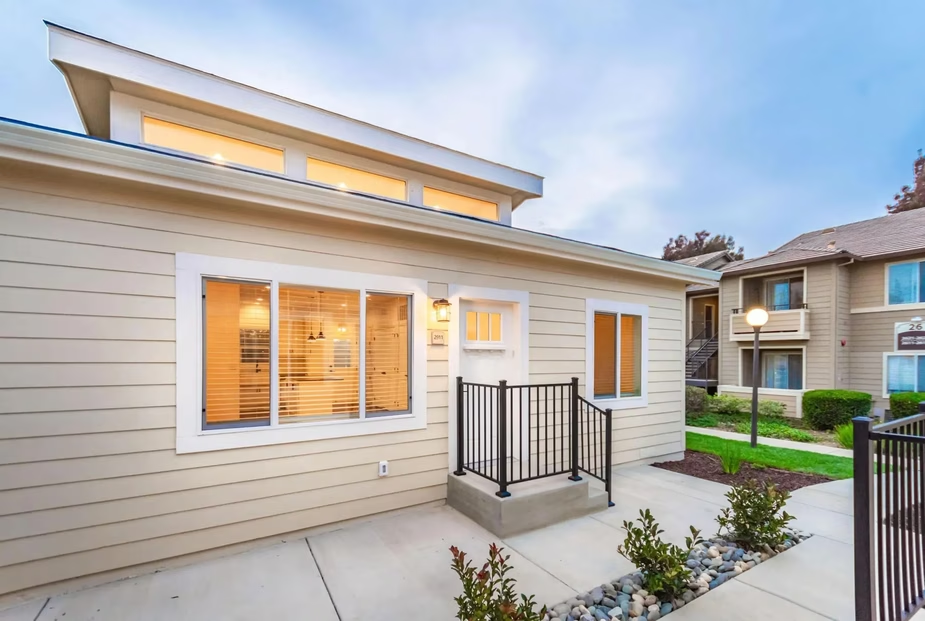
Across the U.S., modular and factory-built homes are rapidly gaining favor among developers aiming to build faster, smarter, and more affordably. With off-site construction offering better cost control, fewer delays, and consistent quality, the approach is increasingly seen as key to addressing America’s housing shortage.
One of the sector’s leading innovators, Villa, a California-based modular housing company, is proving how scalable and flexible this model can be.

“There are a number of challenges when doing modular homebuilding,” said Sean Roberts, CEO of Villa, the largest builder of accessory dwelling units (ADUs) in California.
“Challenges may include dealing with locally idiosyncratic building codes, land use regulations, development and design standards, inspection processes, physical and logistical constraints, differences in skills and experience among onsite trades, subcontractors, and vendors, as well as unique construction financing requirements," Roberts told Realtor.com®.
"Many of these challenges can be navigated to make off-site construction work, but some cannot. It’s a highly situational analysis that requires an experienced builder or developer, such as Villa, to assess all challenges in an objective, data-driven way before diving into a project," he explained.
That experience has allowed Villa to expand far beyond backyard ADUs. Today, the company is taking on larger-scale housing projects for developers, institutional investors, and even public agencies across multiple states.
“We believe Villa's approach is highly scalable, and it is actively scaling right now,” Roberts said. “Villa has expanded from initially building ADUs for individual homeowners in Northern California to now building much larger projects for institutional investors in a variety of typologies. We have also expanded geographically to include metro areas in Southern California, Colorado, and beyond.”
Villa’s success mirrors a broader shift as modular homes gain traction in states like California, Colorado, and New York. According to Realtor.com, the national median list price held steady at $425,000, but prices in the West dropped 3.6%, suggesting opportunities for lower-cost building solutions such as modular housing.
On Staten Island, New York’s latest affordable housing initiative is putting that concept to the test. Under Gov. Kathy Hochul’s MOVE-IN NY program — a $50 million statewide effort — factory-built “starter homes” are being installed on permanent foundations. These homes, assembled in days and delivered nearly complete, are built at roughly half the cost of traditional construction.
The program follows successful pilots in Schenectady, Syracuse, and Newcomb and is designed to provide high-quality, affordable homes to first-time and moderate-income buyers. It also showcases how modular “CrossMod” homes could help New York ease its housing shortage without sacrificing quality or design.

For Roberts, one of modular construction’s defining advantages is speed — a crucial factor in markets facing high demand and permitting delays.
“Production and installation timelines can vary based on location, nature of the project, and how much work is done in the factory versus in the field on-site,” he said.
“In general, we've found that our on-site timelines are materially faster than site-building, typically cutting on-site timelines down by [about two to four times less]. The fastest Villa has gone from setting a home to having it fully completed (with a certificate of occupancy) was 23 days, which is extremely fast compared to traditional site-built construction.”
That speed, combined with the ability to maintain high-quality control in a factory setting, makes modular construction especially appealing for public-private partnerships addressing housing affordability and urban infill.
“Villa has developed factory-built housing for nonprofits and land trusts, and has partnered with public agencies to collaborate on developing housing,” Roberts noted. “For example, Villa recently announced a partnership with the Denver Housing Authority to collaborate on infill development of ADUs for low- to moderate-income families throughout Denver.”
California’s experience highlights both the promise and the growing pains of modular construction. While the state’s housing market has remained relatively stable amid federal uncertainty, some developers report permitting delays and inspection bottlenecks — challenges that modular construction helps mitigate.
By moving much of the work off-site, builders can reduce waste, accelerate timelines, and create homes that are more resilient to climate and labor disruptions.
If modular housing continues to prove its efficiency and durability, it could fundamentally reshape how the U.S. builds — transforming the speed, sustainability, and scalability of home construction for decades to come.
Originally reported by Teresa Mettela in Realtor.